
HubSpot, a product that most people associate with marketing automation, has grown into a complete platform for marketing, sales, and customer support. If you want to become a more customer-centric business, you should seriously consider running all three - marketing, sales, and support - on HubSpot. To appreciate the capabilities of today’s powerful HubSpot platform, we need to first understand how marketing is evolving, and how HubSpot is evolving with it.
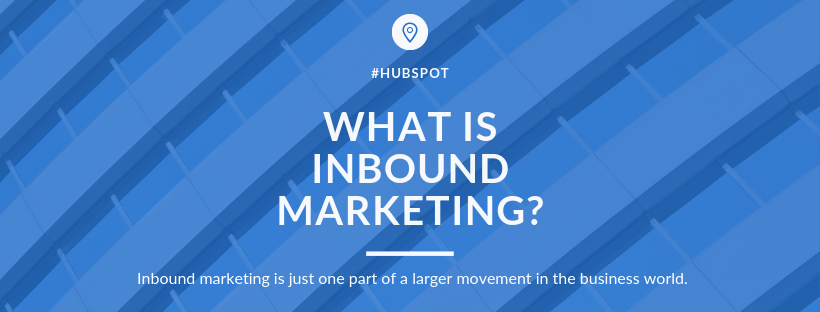
Inbound Marketing is a term coined by HubSpot’s founders in the mid-2000s for a marketing methodology that uses the Internet to attract customers to a business. As opposed to traditional, outbound marketing, which is focused on finding and pursuing leads, inbound focuses on bringing leads to you-- by pulling them in with quality content relevant to the interests of your prospective customers. By creating
Inbound marketing is one component of a larger movement in business. Referred to simply as “inbound”, the movement is about rethinking how a business interacts with people to put the focus on always being helpful and building trust.
The inbound methodology is composed of three stages: Attract, Engage, and Delight. These stages define how a business interacts with them to gain their trust. For example, a prospective customer would be attracted by great content that was well placed to get their attention, such as a blog optimized to be high on a search engine’s results for a key search phrase. Then engaged by obtaining their contact information in return for a helpful whitepaper or other downloadable content. And finally delighted by supporting and engaging them in a convenient, enjoyable way that makes them want to promote the company or product to other prospective customers.
Businesses have used inbound as a growth strategy by mapping these stages to a customer acquisition process represented by a funnel. In this business model, Attract is the responsibility of Marketing, Engage is the responsibility of Sales, and Delight is the responsibility of Service.
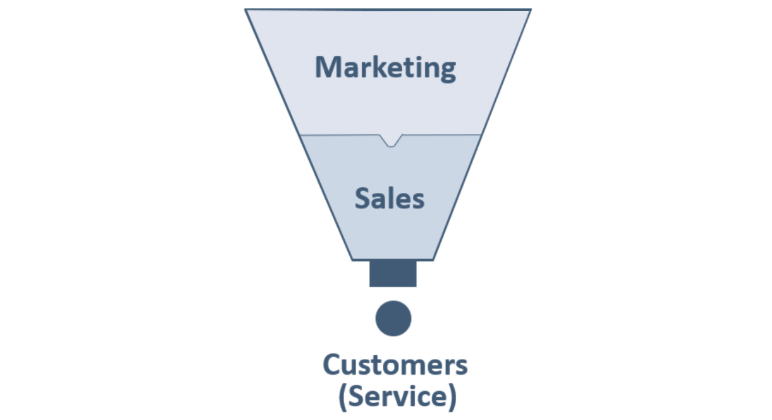
Until Inbound 2018-- until we saw the effect of having all of these services in one place-- we didn’t realize how important this shift was. We had thought of Service Hub (and even Sales Hub) as just an add-on. But the shift going on at HubSpot is immense, and it is bringing many benefits to businesses.
There is
But first, let’s take a closer look at this big shift happening at HubSpot. It’s not just an expanded
Brian Halligan, CEO of HubSpot, described this important evolution in business growth strategy during his keynote presentation at the Inbound 2018 conference. He described a new model for thinking about how customers contribute to business growth - as participants, rather than just an output. The most effective model for business growth, he stated, is no longer the funnel, it’s the flywheel.
As shown below, the outdated funnel model positions customers as the result of a sales and marketing process, and doesn’t consider them to be a part of that process. With the flywheel, customers are at the center-- because they are your best marketers.
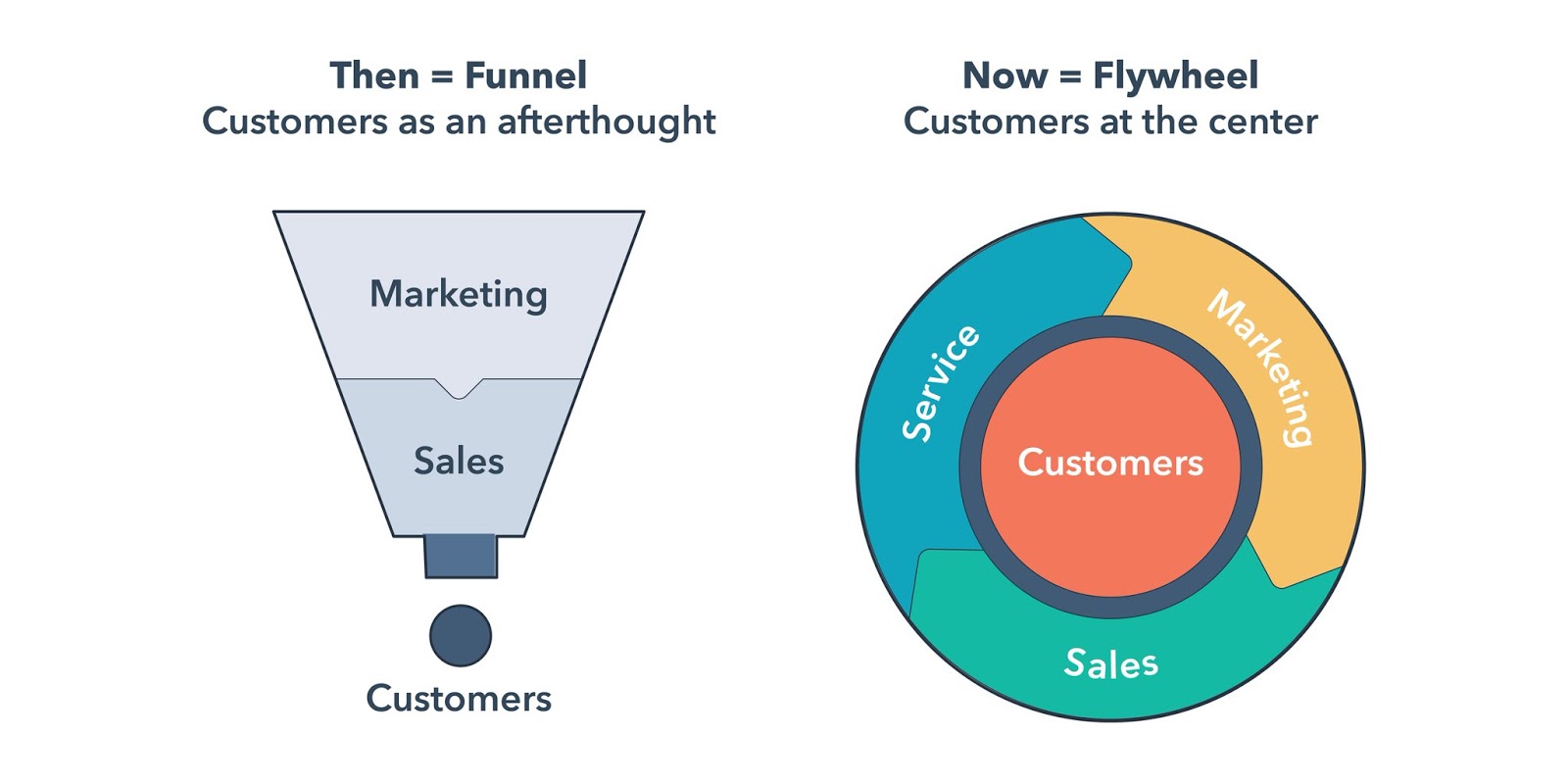
Both the funnel and the flywheel describe business growth models for organizing your company around your buyer’s journey. The buyer’s journey has three stages: Awareness, Consideration, and Decision. During the Awareness stage, a person is trying to understand their problem and learn what potential solutions are out there. For example, their car might be making a strange noise, so they are researching what might be causing the noise and learning about mechanics in the area who offer solutions. Next, they move to the Consideration stage. At this point, they have defined the problem. For example, they may have decided that their car engine is “knocking”. Now, they are researching solutions (e.g., higher octane fuel, decreasing the compression ratio, new spark plugs), looking up information about local mechanics, and asking friends who have had similar problems. Lastly, they enter the Decision stage, where they compare several mechanics and pick one.
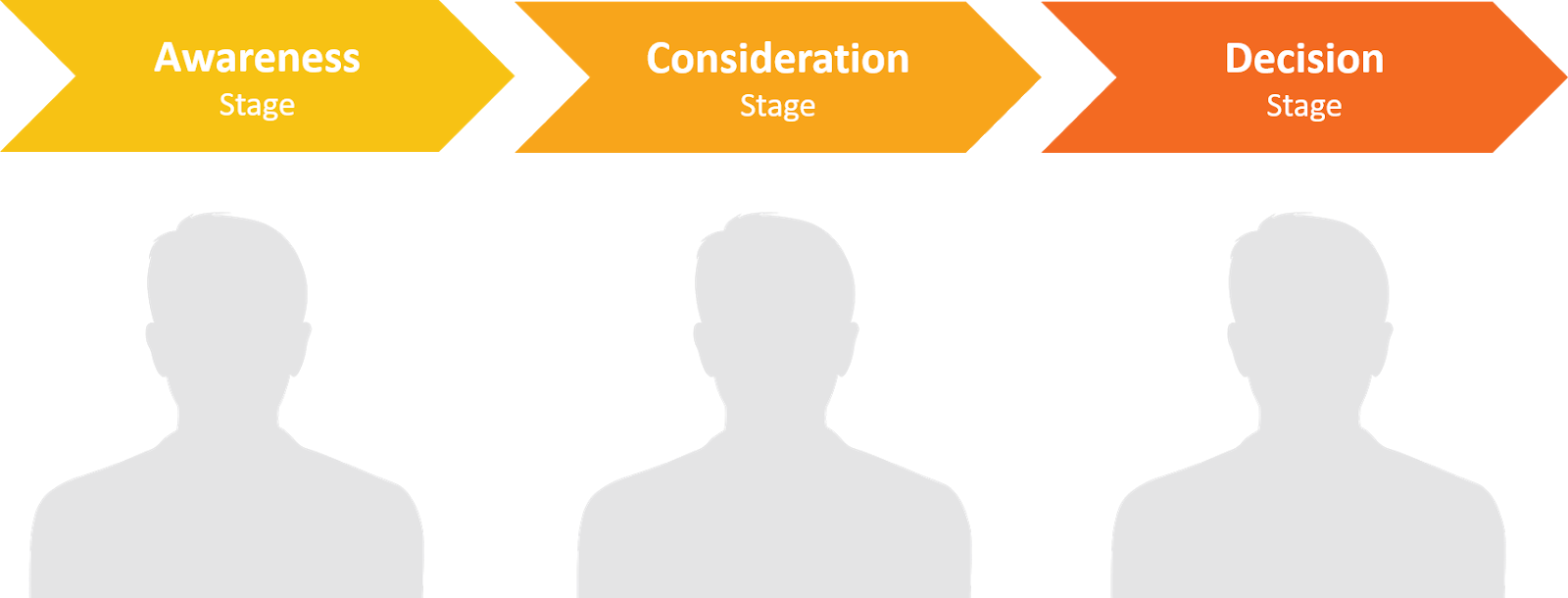
The funnel segregates each business function to specific parts of the buyer’s journey. In this traditional approach, marketing works on building awareness and collaborates with sales during consideration. Sales is responsible for the decision phase, while service takes over the customers. But in the flywheel model, each function plays a role in each stage of the buyer’s journey.
For example, marketing works with customers to promote new features and use cases, continually ensuring that customers are aware of everything they can accomplish with the company’s product. Sales provides customer advocacy, ensuring that customer issues are addressed and that customers are continuing to get value from the company’s product. Sales and marketing work together with customers to create and publish case studies and reviews and generate additional awareness. Service creates a knowledge base - a publically accessible set of questions and answers about the product. The knowledge base supports customers, but but also helps people in the consideration phase of the buyer’s journey to research the company’s product or service.
Notice that in the flywheel examples, the customer’s positive energy is harnessed and invested back into the business to help new prospects work their way through the buyer’s journey. A business organized using the flywheel concept is proactively working with customers to generate content like reviews, case studies, knowledge base articles, and social media posts.
Contrast this approach with the legacy funnel model. Much of the organizational energy is applied at the top of the funnel - creating content to make a large number of people aware of the product. It’s a numbers game: of those with awareness, some percentage of them will engage with the company, and learn more about the product, moving to the consideration stage. Lastly, some percentage of those engaged people will enter the decision stage buy from your company.
Where is the customer in this legacy model? At the bottom of the funnel. An output. What a terrible waste of energy!
These customers are excited about the product and committed to the company. They have just made a decision to invest. Rather than waste the energy, it should be harnessed and fed back into the buyer’s journey so that new people can learn about the product from their peers. This approach builds trust because, no matter how good a company’s marketing organization is, they can never be as convincing and trustworthy as the company’s customers.
Word of mouth has become immensely powerful, more powerful than anyone could have imagined. This is true even with Big Data around to back you up, ensuring that you send your prospective customers highly tailored, personalized, marketing messages. No matter how perfect your marketing is, it is now competing with messages that your existing customers are creating on social media and review sites.
So the funnel model, which puts customers at the output of the buyer’s journey-- making a customer something leads become, one sale at a time-- does not adequately take into account the power that the modern customer holds. The funnel allows all your positive customer energy to flow out the bottom. The funnel does not reinvest all the hard work you did to convert that customer and ensure their exceptional and delighted buyer’s journey. Wouldn’t it be better to harness that energy by feeding it back into the buyer’s journey to benefit new prospects?
Another truth we need to face up to is that our inbound content is becoming less effective- not because of poor quality, but because every prospective customer today sees a gargantuan amount of content. Even highly-tailored content is now seen by many prospective customers as noise they need to tune out just to get through the day. A person shopping for a new couch may visit a few sites to see what’s out there that appeals to them. From that moment on, this person will be deluged. They’ll see hundreds of couch ads and pages of exceptionally well-tailored interior decorating content every time they browse, search, or check out social media. Many prospects find this annoying, and even a little bit creepy. Even if your content might delight them, it’s likely that they’ll just tune it out. For many consumers at the awareness stage of the buyer’s journey, this is where they leave you.
But retaining customers and ensuring their delight throughout the buyer’s journey helps to make them part of your buyer’s journey and convert them not only to sales-- but to marketing as well. Delighted customers are some of your best marketers in the internet age. You should be encouraging delighted customers to talk about your product. Online reviews, social media, and blog posts from delighted customers help to influence your prospects, creating a virtuous cycle of excellent marketing.
This is where the flywheel model comes to the rescue. A business organized for growth using the flywheel model doesn’t just march people from Aware to Engage to Close to “Take Our Survey”. It takes into account the immense power your customers have, and puts them in the center of the buyer’s journey.
Now that you understand how the business growth model has been reformulated from the funnel to the flywheel, we can shift our attention to how the HubSpot platform supports the flywheel model and helps your organization to become more customer-centric.
HubSpot’s platform mirrors the flywheel, using the integration of their tools to keep your business growing. At the center is the CRM (customer relationship management tool). This mirrors the customer as the center of the flywheel, managing your customer information in a single tool accessible to all departments. Rotating around the CRM center are the three “Hubs” that support the three business functions illustrated in the flywheel: Marketing Hub, Sales Hub, and Service Hub.
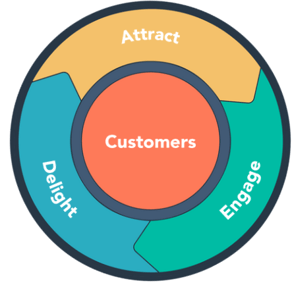
The four components work together to put the customer at the center of the business growth engine. In the following 4 sections, we look at each component and how it works with the others to grow your business, spinning your flywheel ever-faster.
The Marketing Hub is what most people think of when they hear “HubSpot”. The original service offered by the company, HubSpot’s Marketing Hub is a “all-in-one” platform for your marketing team that provides a sizable number of crucial marketing services. By integrating all of these services together, the Marketing Hub makes it simple both for marketing beginners to get started and for digital innovators to up their game. The tools provided by the Marketing Hub include:
These features combine into a powerful platform for inbound internet marketing, and become even more powerful when combined with Sales Hub, Service Hub, and CRM. Inbound marketing is all about attracting new prospects to your business, engaging them at scale, and delighting them individually. Let’s take a look at how a company can use all the tools in Marketing Hub to implement inbound marketing and grow their business.
Imagine Danny’s Doghouses. Our fictional hero, Danny, has a small business making and selling doghouses through his website (dannysdoghouses.com) but is looking to expand his business and improve customer experience. Danny is already implementing some inbound strategies-- he blogs regularly on his website about dogs and dog care, he runs social media accounts on several platforms, and he sends regular emails to his mailing list of dog lovers with targeted content, promotions, and personalized messages.

But Danny knows he could expand his business with a more dynamic inbound program, and utilizes the tools of the Marketing Hub to do so. We’ll take a look at some of the most powerful features in Marketing Hub through Danny and his growing doghouse business.
Poor word-of-mouth from potential customers deluged with irrelevant emails, paid social posts, or other targeted marketing pointed in the wrong direction can be devastating to a business. Attracting-- and keeping-- the interest of your audience is essential to making conversions and eventually, sales.
Let’s look at how Danny of Danny’s Doghouses can use the tools in HubSpot’s Marketing Hub to create and distribute attractive content and generate new leads.
Danny knows that his target audience is going to be searching online for information about dog ownership and care, and wants to get their attention with valuable content. To drive traffic to his website, he writes a twice-weekly blog on dog-related topics, such as “How Often to Groom Your Dog” and “10 Tips for a Dog-Friendly Yard”. When he moves to HubSpot’s Marketing Hub, he learns that he can run this blog entirely through HubSpot.
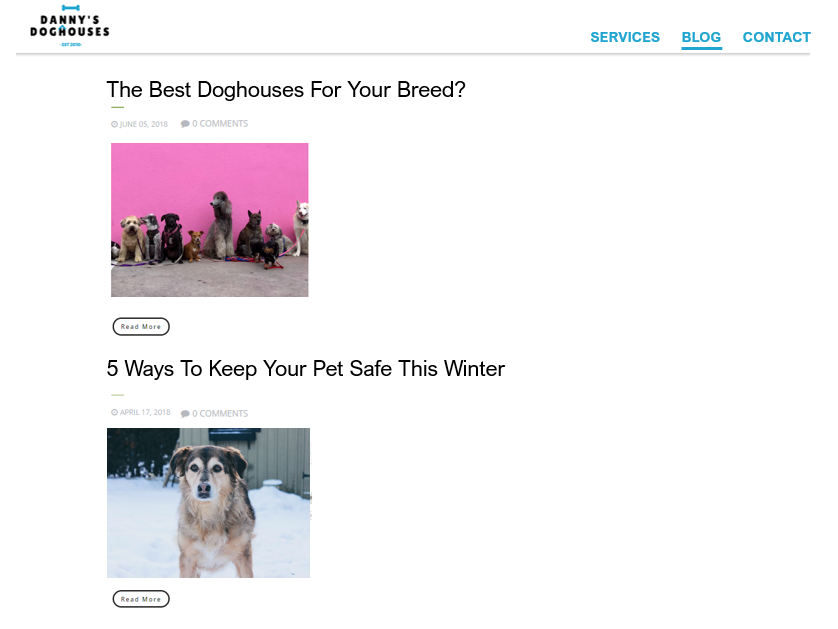
HubSpot’s blogging tool makes it easy for Danny to draft and publish posts, analyze their performance, manage comments and tags, and-- critically for lead generation-- create a subscription form. When visitors fill out this form to subscribe to his blog, they get an email each time he posts with a link to his latest post. In return, Danny gets their contact information. This way, he builds an email contact list of dog lovers who have demonstrated interest in Danny’s Doghouses.
Calls-to-action (CTAs) are visually striking, distinct from the rest of the page, and use action verbs to encourage customers to take action. Often, the action involves clicking through to a landing page where visitors can enter their contact information in exchange for high-value content. Examples of high-value content include eBooks, free trials, and free consultations.
Danny knows that many people who end up buying doghouses first think about building one themselves. So he creates a guidebook for his first content offer: “Building a House for Your Puppy,” and offers it with a CTA (“Download Your Guidebook”). He creates this CTA on HubSpot’s CTA dashboard. On the CTA dashboard, Danny can create attractive new CTAs, manage all of the CTAs on his website, and analyze relevant metrics for each CTA. When Danny creates this CTA, he knows it needs to lead to a landing page.
A landing page is a page on your website where prospects land after clicking a link indicating their interest in downloading high value content (such as a whitepaper or Danny’s guidebook). On a landing page, visitors fill out fields with their contact and other information in order to receive this content. In this way, a visitor enters your contact database and becomes a lead. These pages are usually stand-alone (as in, devoid of standard navigation and other website content).
Danny uses HubSpot’s landing page tool to create and manage his landing pages and analyze their success for greater lead generation potential. Danny initially puts pictures of his doghouses on his landing page, but through the A/B testing capabilities available within HubSpot’s landing page tool, he learns that his landing pages without images perform better, and removes them, increasing the number of form submissions.
Danny’s first guidebook is popular, so he also writes “What’s the Best Doghouse for Your Breed” and “How Much Should You Spend on a Doghouse?” and creates landing pages for each guidebook, managing them in HubSpot. With his landing pages set up, Danny starts to build a good database of contact information, which he follows up on with an email campaign.
When Danny’s popular dog-rearing guidebooks generate a sizeable list of leads, he can start to send regular emails to communicate with his audience and begin to create relationships. Danny runs a special sale on his website and creates an email campaign informing his leads of the sale.
HubSpot’s email marketing function makes it easy for Danny to design beautiful templates, automatically personalize emails with contact information, analyze metrics (including opens, click-throughs, and more), perform A/B tests, and optimize for different devices. Danny, seeing that many of his leads access his site on a mobile device, decides to increase the size of links and CTA buttons to make them easier to click. He observes a higher click through rate from mobile users as a result.
His email campaign catches the interest of his audience, bringing visitors to his store. For the people who don’t purchase, Danny turns to HubSpot’s lead nurturing tools to help keep them engaged.
Some people click through on Danny’s email campaigns and are ready to make a purchase-- great! But many who click through just end up browsing-- they’re interested, but they don’t buy. Danny wants to keep them interested using a process known as lead nurturing: essentially, becoming a trusted advisor to his leads, providing them with information they’re already seeking (without hounding them to make a purchase). Good lead nurturing encourages leads to come to you when they’re ready to make a purchase. It’s important to consider lead nurturing as the growth of a relationship-- not simply inundating your leads with reminders that you exist.
Danny knows that his leads are not all currently in the market for a doghouse, so he doesn’t want to be constantly pestering them to buy. For these leads, he wants to continue providing them with helpful information so that when a lead is ready to purchase a dog house, they’ll trust Danny’s brand and be predisposed to purchase from him. There are several tools in HubSpot’s Marketing Hub that Danny can use to implement productive lead nurturing.
Lead management ensures that you treat every one of your leads like a real person, not just a set of contact details. You want to have a single database of contacts-- not disjointed, overlapping lists from a variety of landing pages, blog subscriptions and other inbound efforts. This list should be easily segmented so that you only send content (such as email marketing and targeted social campaigns) to people who have already demonstrated interest in it. And you want to be sure that you keep your sales team apprised of the best leads, so they can prioritize their efforts.
Danny now has a dedicated base of readers on his blog, visitors who have downloaded guidebooks, and other contact information that he uses to nurture leads. He uses HubSpot’s integrated contact database and predictive lead scoring system to segment his contacts and develop a drip campaign for his most receptive leads.
In order to properly nurture a lead, you need to know when to put targeted content in front of them to grow your relationship. Ideally, you want to contact them when they’ve already indicated interest or their readiness to buy based on other interactions they’ve had with your website, blog posts, social media posts, or other marketing efforts. Often, this will be done through what is called a drip campaign: emails sent automatically either by predetermined triggers, at predetermined times, or both. If you’re reliably bringing in quality leads, marketing automation can minimize the work necessary to help you properly nurture those leads with well timed and targeted drip campaigns.
Danny’s loyal contact list of dog lovers are engaging with his content-- clicking through his email marketing, imparting their contact information on landing pages, and engaging with social media campaigns. He uses HubSpot’s marketing automation tools to create a three-part drip campaign sent automatically over 7-10 days: the first email sends them to a relevant blog post, the second to an offer for a guidebook, and the third links to his store. With the logistics automated, Danny can focus on creating valuable and engaging canine content.
Danny wants to be sure that dog lovers everywhere see his content, read it, and convert. He knows that most people prefer to search independently to find great dog care products, and rely on their own criteria to choose the most relevant, interesting dog ownership content. To get his content to the top of the results, he uses Search Engine Optimization (SEO) techniques and tools to help his content rank well in searches.
Search engines don’t make their algorithms public, but there are strategies that have been positively identified to improve the ranking of your content. You want your content recognized by search engines as relevant to the search keywords, authoritative on the topic, and as high-quality overall. This will encourage the search engine to rank your website highly in search results. Creating a central “pillar” page (a page that broadly covers the topic you want to rank highly for) and linking it to in-depth content (such as blog posts and webpages that more thoroughly cover the topics of your chosen keywords) that you’ve created demonstrates to search algorithms that your website is an authority on your topic. To implement these techniques, Danny turns to HubSpot’s Marketing Hub.
Danny uses the HubSpot content strategy tool to organize his website content and blog posts into topics. He wants to rank highly for searches related to dog ownership, such as “dog grooming basics”. He creates a comprehensive central pillar page on “The Basics of Dog Grooming”. Then, using HubSpot, he links his blog posts on “Grooming Large Dogs”, “Finding the Best Dog Groomer in Your Area”, “10 Great Dog Grooming Products for Sensitive Skin”, and his video, “How to Trim Your Dog’s Nails,” to that pillar page, creates URLs with his keywords, and monitors SEO success with relevant metrics (such as conversions from organic traffic and bounce rate). With these strategies in place, Danny ranks highly in dog-grooming-related searches and drives additional traffic to his website.
Social media, such as Twitter, Facebook, LinkedIn, Instagram, and other social platforms, provides another opportunity for Danny to create great content for his community of dog owners. By being active on social media, Danny builds awareness of his brand, and he can promote his helpful content (blog posts, guides) - ultimately generating more leads. He is careful to strike a balance between promoting his business-- which he only does every so often-- and being a helpful, entertaining, and interesting member of the dog-owning community.
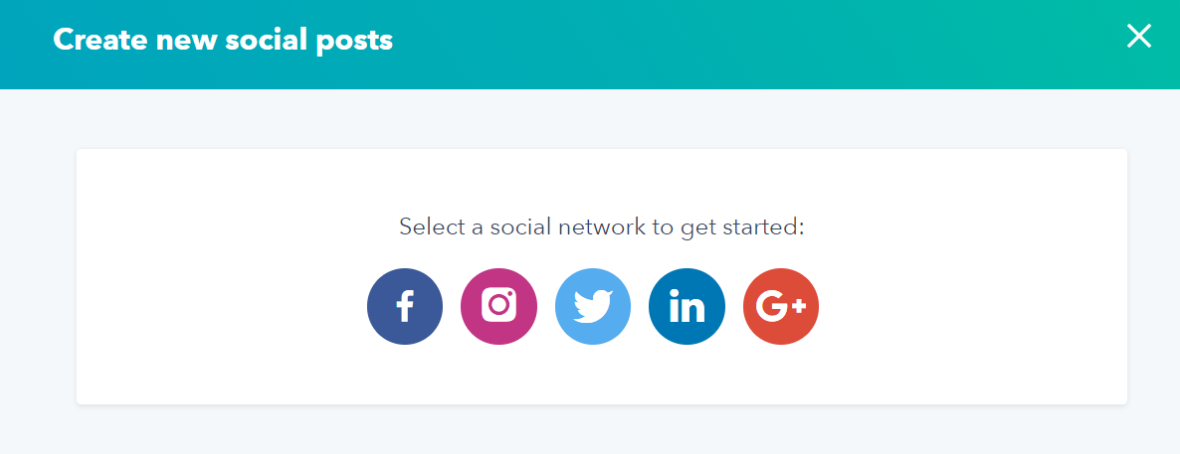
Being active on the many different social channels he needs to reach dog owners is a lot of work. HubSpot can make social easier for Danny and help him to efficiently spend his time making social posts. HubSpot’s calendar feature gives Danny a bird’s-eye view of all of his scheduled posts, simplifying management. Danny can manage all of his social accounts through one dashboard in HubSpot’s social tool, easily integrating between channels without simply posting the same content over and over. He can connect his own custom URL shortener, add images and emojis, and schedule future posts entirely through HubSpot’s social dashboard.
In HubSpot, it’s easy for Danny to create Twitter posts with cute dog GIFs, make Instagram posts with dog house success stories, connect with industry professionals on LinkedIn, and connect everything back to his website from one location.
Danny has a good inbound flywheel going, integrating organic lead generation avenues and creating high-value content that makes him a visible member of the online dog owner community. To supplement his organic presence, he also uses paid digital advertising for lead generation.
Danny wants his ads to be highly targeted and not disruptive. He decides to create a lead ad-- an ad that functions as a landing page within a social channel like Facebook-- to promote his existing content. Lead ads are less disruptive than normal ads, because they don’t require the user to leave the social network in order to fill out a landing page. HubSpot’s tool for lead ads helps him target this ad: he decides to focus on Facebook and Instagram users who already own a dog house.
Within HubSpot’s Marketing Hub, Danny can set up and manage Facebook and Instagram lead ads so that the leads generated automatically become contacts in his HubSpot environment. Additionally, he can add this contact information to marketing workflows, email campaigns, and other lead nurturing tools that he has already established in HubSpot. The ad brings more leads into his database that he can then add to his drip campaigns.
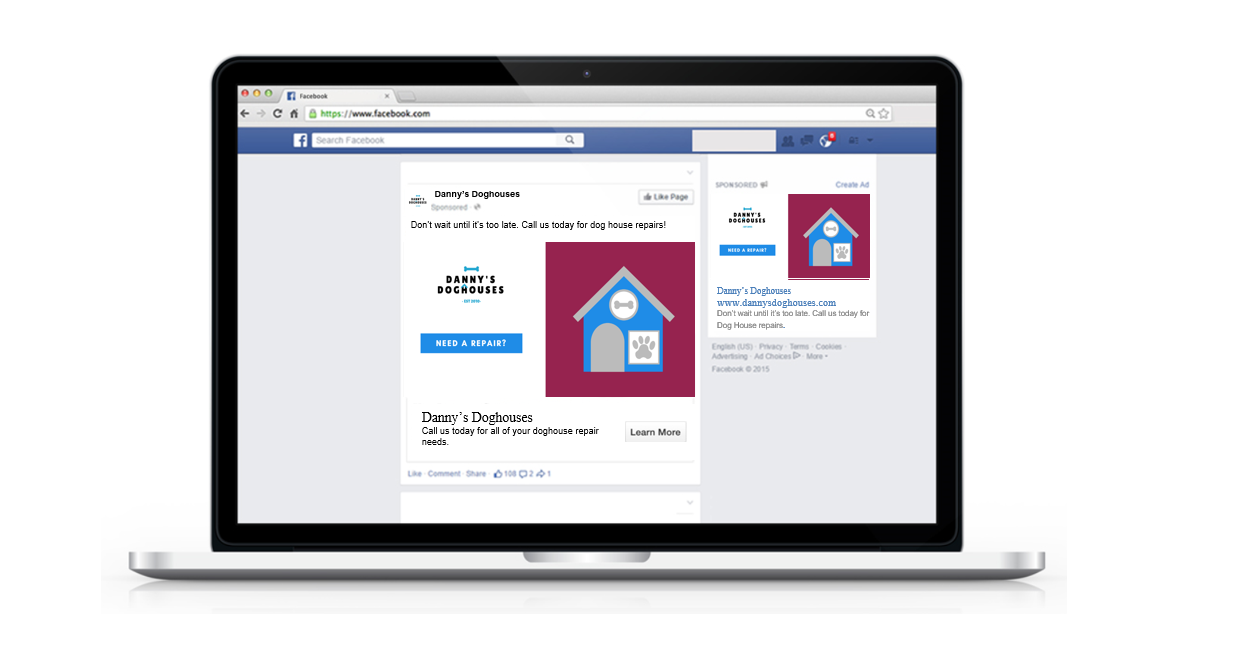
Danny also decides to integrate Google Ads into his HubSpot environment to drive buyer-ready traffic to his website. Google Ads help the Danny’s Doghouse brand rank highly in searches for top keywords signalling buying intent. Danny buys Google Ads for keywords including “doghouse store” and “where to buy a doghouse”. In HubSpot, Danny tracks the success of these ad campaigns by measuring click throughs, landing page fills, and other predefined metrics. He sees that “where to buy a doghouse” ads are more successful overall than “doghouse store” ads and spends more of his efforts on the former keyword.
As Danny generates more and more leads, managing all of the contact information (and connecting it with the relevant campaign, market segment, and other important lead data) can quickly become ungainly. Putting all of his contact data manually into an Excel spreadsheet takes up too many hours of the day, and he notes that he’s occasionally duplicated contact information from leads who’ve converted in more than one way.
It’s essential that Danny have a unified contact database management system to easily navigate and track subscribers, leads, followers and customers. Luckily, HubSpot has an integrated contact management solution that manages Danny’s contacts while keeping them connected to his other HubSpot tools. HubSpot CRM makes sure that contact information from blog subscriptions, landing page form submissions, and trade show leads is all contained in a central, easily navigable database that he can easily pull from to create drip campaigns and other marketing efforts.
If Danny is already using a contact management software, such as SalesForce, he may not want to undertake the task of entirely switching thousands of contacts over to HubSpot. Conveniently, HubSpot can integrate the features Danny is already using with SalesForce to keep other workflows moving seamlessly.
By using HubSpot’s SalesForce integration, Danny can easily send important data on quality leads to his sales team and use data from within SalesForce to personalize his marketing efforts.
Sales Hub... stay tuned!
+1 212 575 4985
600 3rd Avenue, 2nd Fl
New York, NY 10016
We would love to hear from you. If you have any additional questions don’t hesitate to contact us.